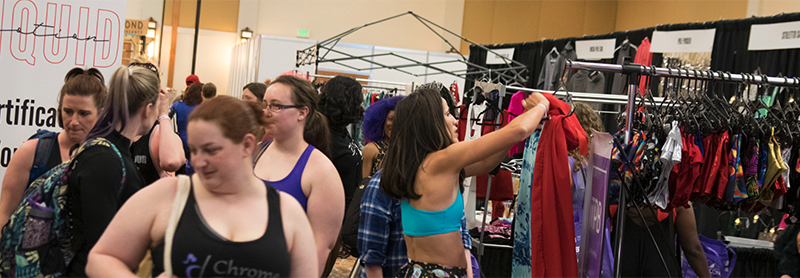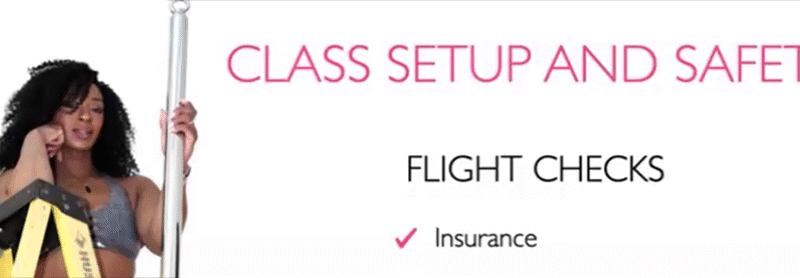A train-cation is a trip (usually away from home) where you focus for a specific…

How to value your pole dance business
There are many ways to value your pole dance business. Some of them are more relevant for product businesses, whereas others are more relevant for subscription-based businesses, like a studio or an online pole tutorial company that has a monthly or annual commitment for subscribers. Learn about several options, then consider engaging with a business valuation specialist to make sure you get the most money when you sell your business.
Remember, just like pricing products or pricing services, there is a little bit of art and science involved in valuing your pole dance business. Just because you value your business at a certain rate (and have the data to back up that valuation!), you still might not find a buyer willing to pay that amount.
The value of your assets
This is the most straight forward approach for product-based businesses or businesses that have a physical location. Your assets are all the “stuff” in your business, like your equipment (poles, yoga mats, crash mats, etc.), your merchandise (all branded material, like apparel), and potentially your location, particularly if you’ve negotiated a multi-year rental agreement or if you own the property where your business is based.
Assets also include any intellectual property, such as any trademarks, special recipes, video tutorials, written content, or other material/information that is unique to your business.
Collect all the data about the value of your assets.
Multiple of historical revenue
Another way to value your business (or to add to the asset value) is to look at historical revenue. This is all the revenue your business has made over the years. The greater the revenue after expenses (not just the revenue, but also the profit) you have, the healthier and more attractive your business may look to future owners.
Put yourself in the shoes of someone buying your business. Unless you have something very unique as an asset, generally people want to buy something that has a proven track record of success. If your business has never generated any revenue, this doesn’t mean you can’t still sell it. You just might have to be creative in your approach to potential buyers to show them the possibilities your business might have to generate revenue in a different situation, such as with a different owner/manager, different location, more investment, or other factors.
Collect all the data about the historical revenue of your business.
Multiple of projected future revenue
Projecting revenue can be a bit tricky. If you have several years of historical data, you may start to see trends that can help project future revenue in a realistic way. While it’s impossible to accurately predict the future of business revenue, basing your prediction on facts can be a useful tool to sell potential buyers on the value of your business.
For instance, if you have several years of data showing a 10% growth in revenue year-over-year, then you can realistically estimate that same trend (or a slightly lower trend) continuing for future years. If you have a subscription-based model, which means that you automatically charge customers every month or every year for your service or product, this is typically seen as a safer guarantee for future revenue growth than businesses that do not have reoccurring revenue.
Collect all the data about the projected future revenue of your business.
Other factors to consider
“Goodwill” in a business context is considered an intangible asset, which means everyone recognizes it’s important, but no one knows exactly how to quantify it. What it can mean in practice is the relationships that the owner of the business has created in their industry or in their local community that makes the business more successful than the sum of its assets or even its revenue. In the modern era, this could also refer to social media following, name recognition, consumer trust, or other factors that haven’t specifically generated revenue but do contribute to the success of the business. These factors would be hard for a new business providing the same product or service to replicate quickly, so it makes the existing business worth more to potential buyers.
Putting it all together
Now that you have collected some information about how to value your business, here are some strategies to put that information together to create a purchase price:
- Purely based on assets: Subtract any liabilities (bills, debts, etc.) from the value of all the assets that made up your business.
- Multiple of historical revenue: Look at the historic revenue and multiply that by several years/months. For instance, a business that has shown revenue of $10K every year may be worth $50K to a buyer over 5 years. You should also consider business valuations in similar industries to normalize revenue numbers. If relevant, consider future revenue predictors in this calculation.
- Combination: Add as many of these factors together (assets, historical revenue, projected revenue, other factors) as are relevant to your business and subtract any liabilities (bills, debts, etc.) to come up with the valuation.
Next steps
If you’ve done all the math and have some ideas of what your business could be worth, consider working with a business valuation specialist to confirm that your numbers are realistic. The American Society of Appraisers is a good place to start learning about hiring an expert!
Remember, just because you believe that your business is worth a certain amount of money AND you have the documentation to support that belief doesn’t mean that anyone will want to buy your business. Selling your business to the right buyer might take time.



